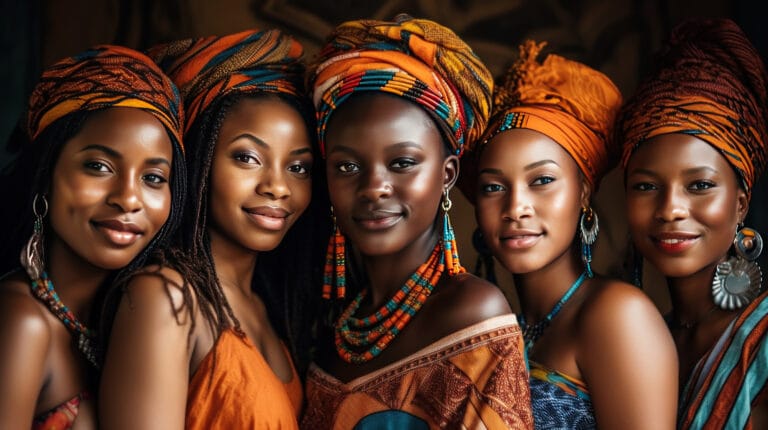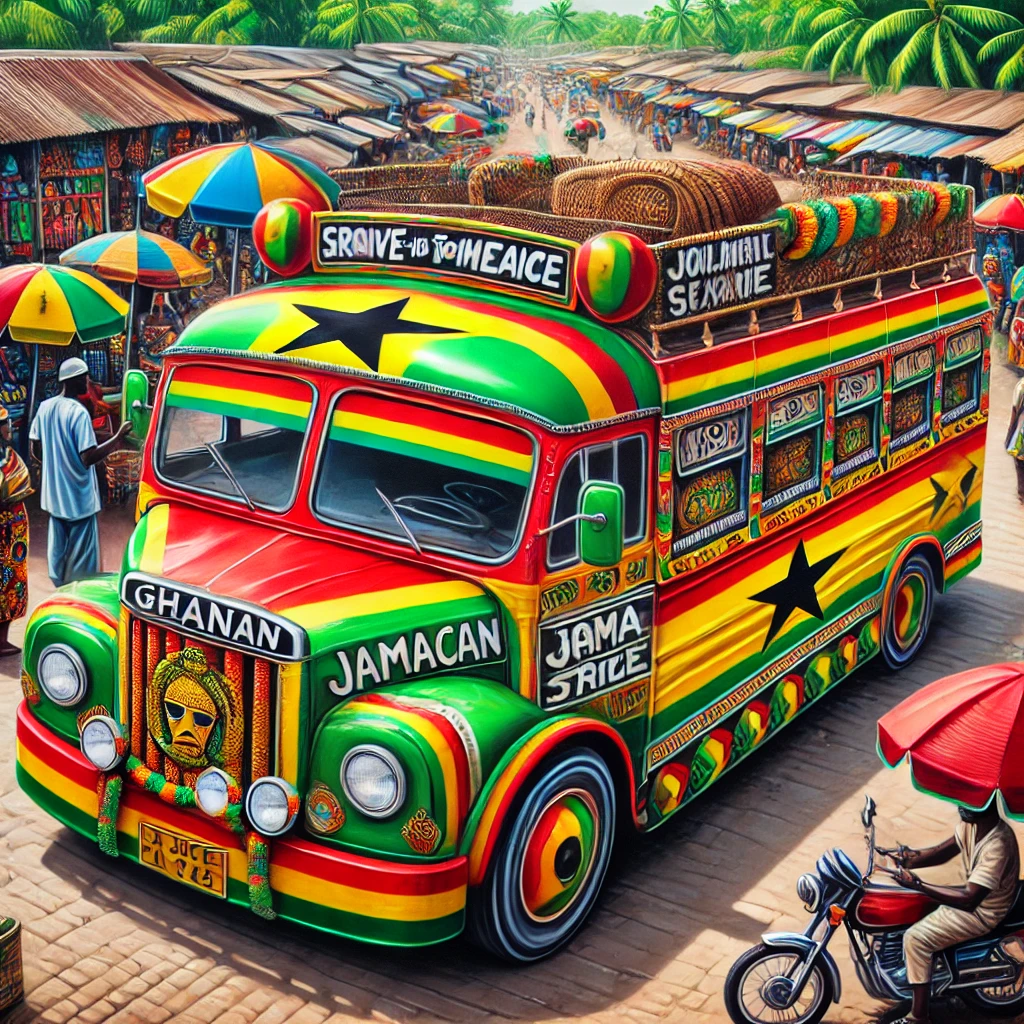Have you ever wondered why Ghanaians love colour? When I first visited Ghana, I was surprised how much colour I saw all around me. Even though I’m from a culture that also loves colour, Ghana has taken this love to a next level. When it comes to the expression of colours, Ghanaian women stand out. They express culture and pride through their many shades.
From the intricate kente cloth to the picturesque buildings, everything in Ghana is full of brightness. Even public transportation, like the tro-tros, joins the vibrant scene. Walking the streets of Ghana is reminiscent of walking a live art gallery. In this gallery, colours tell a story of culture, tradition and excellence.
But the love for colour goes beyond just decoration. It’s deeply woven into the cultural fabric of the country. Ghana’s love for colour is a part of their people and not just their clothes and surroundings. Colours then, are an expression of the Ghanaian people, rather than a mere show of art.
This affection for colour isn’t just a modern trend—it’s rooted in history, spirituality, and tradition. In this blog, I’ll explore five reasons why Ghanaians love colour and why it holds such meaning to them. Let’s dive in!
1. Cultural Significance of Why Ghanaians Love Colour
Ghana’s love for colour is a cultural thing. I often hear the slang “do it for the culture,” and in Ghana it is a “do it for the culture” thing. Colours go beyond aesthetics to carry deep meaning and significance. Kente cloth is a symbol of Ghanaian heritage rather than just a mere style of clothing.
For example, yellow in kente represents wealth and beauty, green symbolizes growth and fertility, and black stands for spiritual strength. Wearing colorful clothing during festivals like Homowo or Hogbetsotso is about celebrating identity, traditions, and community rather than just for the sake of looking good.

2. Historical Roots in Art and Expression
The reason why Ghanaians love colour can be traced back to their rich artistic traditions. Like most African people, Ghanaians are naturally artistic. Adinkra symbols tell stories of values, proverbs, and life lessons. These symbols serve as a visual language passed down through generations.
In addition, natural dyes made from plants and minerals were historically for beauty. Nonetheless, they were also used to transfer important messages in regards to status, beliefs and community roles. This deep connection between colour and culture is a big part of why Ghanaians love colour with such passion.
3. Spirituality Is Part of the Reasons Why Ghanaians Love Colour
For Ghanaians, colour is also a spiritual thing. They believe that colours carry both energy and meaning. In traditional ceremonies, various colours are used to align people to the spirit and invoke blessings. In the Western world we often associate red with caution or danger and green with go. However, Ghanaians see colours beyond the real world. For them, colours carry deep spiritual connotations.
For instance, red represents passion, mourning, and protection. White on the other hand attests to purity and reverence. During rituals, colours also play a special role. They also reinforce spiritual importance. This connection is a key part of why Ghanaians love colour and express it in their way of life.
4. Connection to Nature and the Environment
Ghanaians are a set of people very much connected to nature. This bond is inspired by the many colours they see in the natural environment. The lush greenery of Ghana’s forests and the blue skies instill in them an appreciation for vibrant shades. It also inspires how they express these bold hues in their art and culture.
Ghanaians use colours to beautify their environment, much like how colours beautify nature. This harmonious relationship between people and the land celebrates the country’s rich ecological diversity.
5. Everyday Life and Modern Influence

Ghanaians’ love for colour can be seen in their daily lives. From the clothes they wear to the cars they drive, these people express colours in their everyday living. Even their streets are full of the brightness of excellent shades. Their buildings and signboards are rich in colouration.
An example is how tro-tros busses are decorated with colours. These public transports are converted into moving art galleries. You will often see the Jamaican flag, with its rich colours, pasted on Ghana’s Tro-tros and public transport.
This colorful outlook extends to global fashion and art scenes. Ghanaian textiles and art are gaining international recognition, influencing designers and artists around the world.
Conclusion
If you’re thinking of visiting Ghana, prepare for an explosion of colour. If you’ve already been there, you’ll know that the nation have an undeniable love for colour. Now you know why Ghanaians love colour so deeply and its significance in their daily lives.
From the vibrant kente cloth to the energy of urban streets, colour serves as a way for Ghanaians to celebrate life and communicate their values.
Whether through the stunning art in their markets or the lively hues in everyday life, Ghana is a country that proudly wears its colours. Perhaps the true magic of Ghana lies in how it continues to inspire and captivate both visitors and locals with its vibrant world of brightness. May you be blessed by Ghana’s rich and colourful scene.











